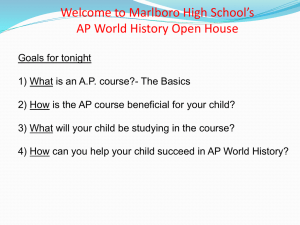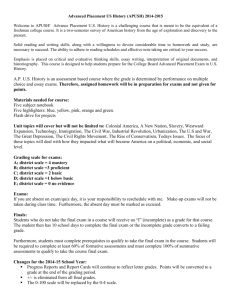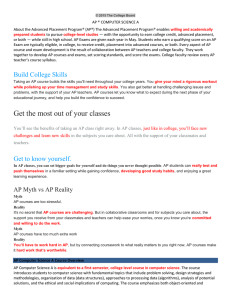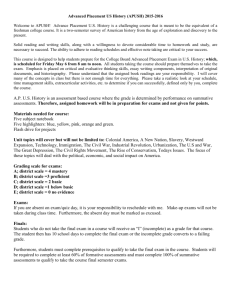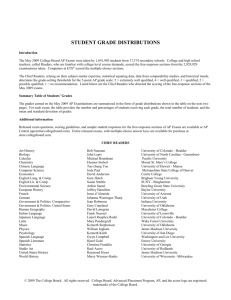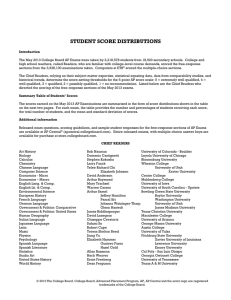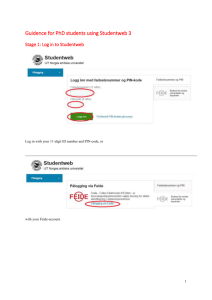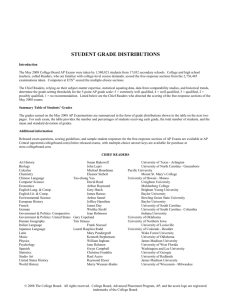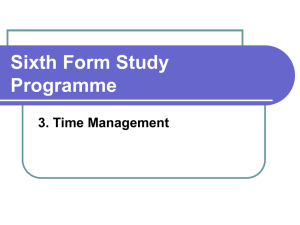WHAT IS AP?
advertisement
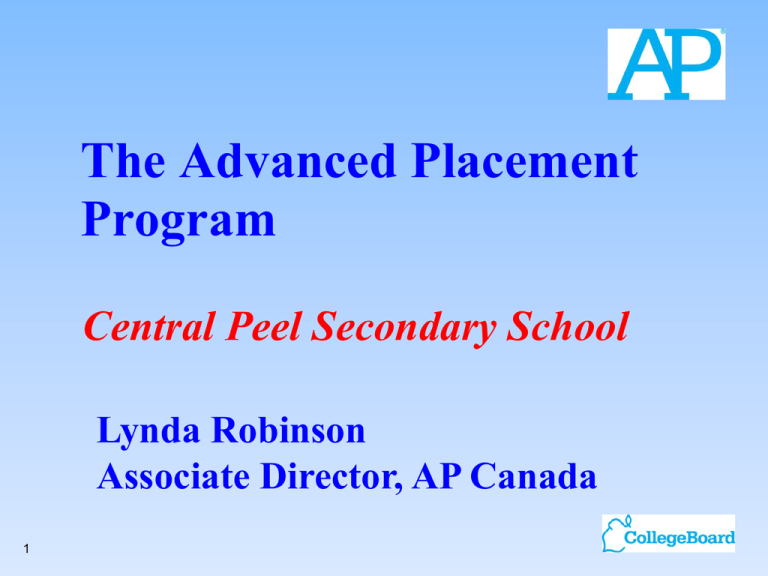
The Advanced Placement Program Central Peel Secondary School Lynda Robinson Associate Director, AP Canada 1 1. What is AP? 2. What is Pre-AP ? 3. Benefits of the AP program 2 2 AP STATISTICS FOR MAY 2012 WORLD : # of countries # of high schools # of students # of exams written 140 18,500 2,100,000 3,700,000 CANADA : # of high schools # of students # of exams written 586 17,000 26,000 ONTARIO : # of high schools # of students # of exams written 3 217 5,057 7,800 3 WHAT IS AP? • AP allows motivated high school students to take university-level courses while still in high school • 34 courses in 21 subject areas • taught by high school teachers • courses developed by committees of university professors and experienced AP teachers • exams are written in May at the student’s school • each exam is 50% multiple choice / 50 % free response 4 4 AP EXAM GRADES 5 = extremely well qualified 4 = well qualified 3 = qualified 2 = possibly qualified 1 = no recommendation 5 5 • Successful completion of an AP Examination = transfer credit = advanced placement = or both. • AP courses are recognized by 90% of post secondary institutions in North America in over 600 universities in over 60 countries around the world. 6 6 WHAT IS PRE-AP? A clearly articulated sequence of courses that enrich students and lead to AP courses. Teachers trained to help students acquire the skills, concepts and habits of mind necessary for success on AP Exams. Emphasis is on inquiry-based learning, problem-solving techniques and other learning strategies that students need for success in AP and beyond. 7 7 WHY TAKE AP? 1. Enrichment & Challenge 2. Enhancement of Individual Strengths 3. Active learners 4. A Step ahead at University - exams & projects 5. Advanced Placement/Credit/increased options at University 8 6. Admissions Process & International Recognition 8
